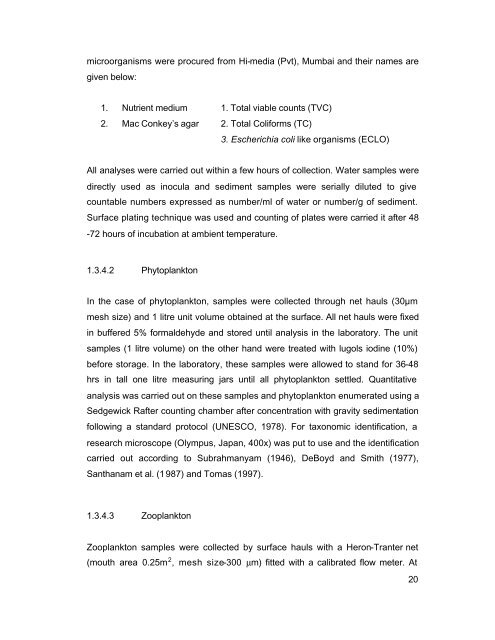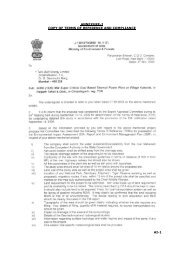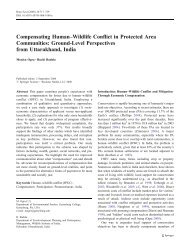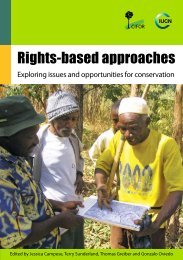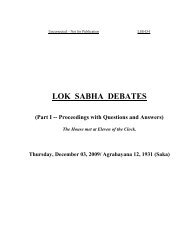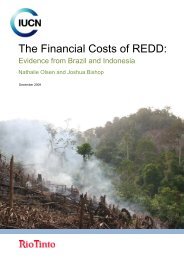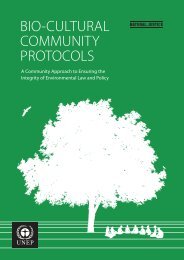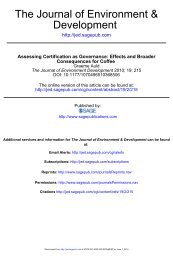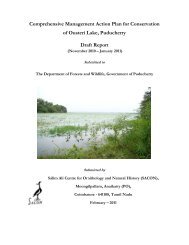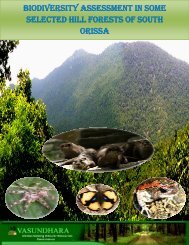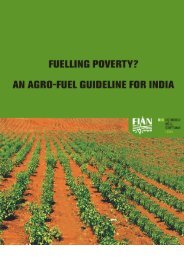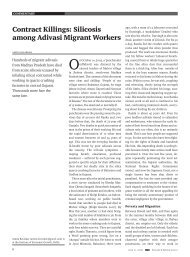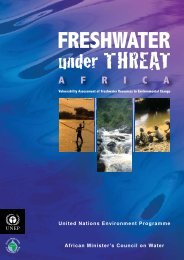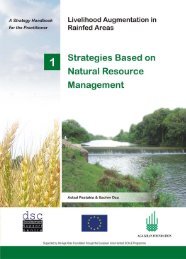1. INTRODUCTION - India Environment Portal
1. INTRODUCTION - India Environment Portal
1. INTRODUCTION - India Environment Portal
You also want an ePaper? Increase the reach of your titles
YUMPU automatically turns print PDFs into web optimized ePapers that Google loves.
microorganisms were procured from Hi-media (Pvt), Mumbai and their names are<br />
given below:<br />
<strong>1.</strong> Nutrient medium <strong>1.</strong> Total viable counts (TVC)<br />
2. Mac Conkey’s agar 2. Total Coliforms (TC)<br />
3. Escherichia coli like organisms (ECLO)<br />
All analyses were carried out within a few hours of collection. Water samples were<br />
directly used as inocula and sediment samples were serially diluted to give<br />
countable numbers expressed as number/ml of water or number/g of sediment.<br />
Surface plating technique was used and counting of plates were carried it after 48<br />
-72 hours of incubation at ambient temperature.<br />
<strong>1.</strong>3.4.2 Phytoplankton<br />
In the case of phytoplankton, samples were collected through net hauls (30µm<br />
mesh size) and 1 litre unit volume obtained at the surface. All net hauls were fixed<br />
in buffered 5% formaldehyde and stored until analysis in the laboratory. The unit<br />
samples (1 litre volume) on the other hand were treated with lugols iodine (10%)<br />
before storage. In the laboratory, these samples were allowed to stand for 36-48<br />
hrs in tall one litre measuring jars until all phytoplankton settled. Quantitative<br />
analysis was carried out on these samples and phytoplankton enumerated using a<br />
Sedgewick Rafter counting chamber after concentration with gravity sedimentation<br />
following a standard protocol (UNESCO, 1978). For taxonomic identification, a<br />
research microscope (Olympus, Japan, 400x) was put to use and the identification<br />
carried out according to Subrahmanyam (1946), DeBoyd and Smith (1977),<br />
Santhanam et al. (1987) and Tomas (1997).<br />
<strong>1.</strong>3.4.3 Zooplankton<br />
Zooplankton samples were collected by surface hauls with a Heron-Tranter net<br />
(mouth area 0.25m 2 , mesh size-300 µm) fitted with a calibrated flow meter. At<br />
20


